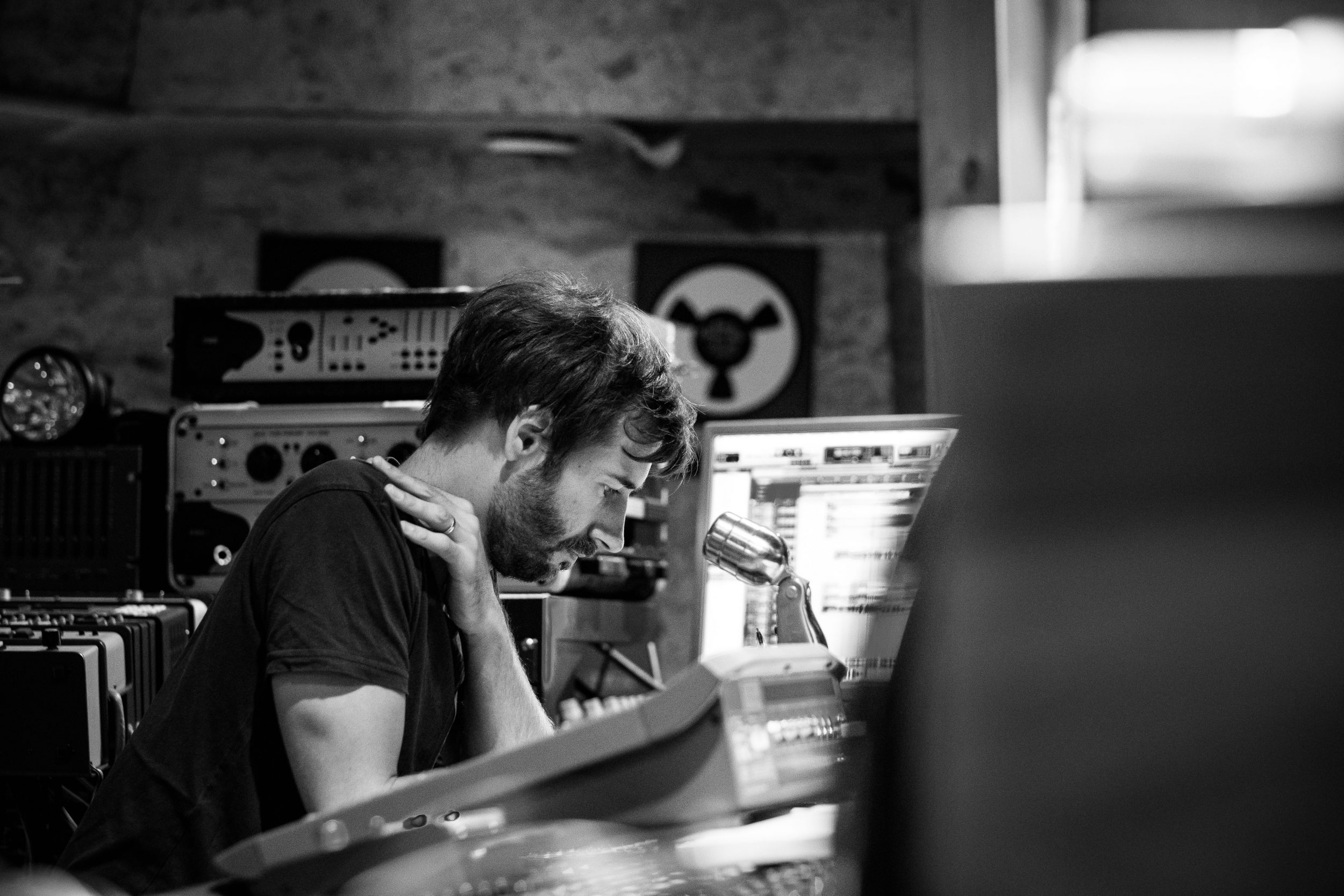In the first of a three-article series, we get to know Melbourne mix engineer and producer, Simon Moro.
Moro’s worked with everyone from Allday to Russell Coight and the City of Prague Philharmonic Orchestra, but he started out playing in bands and recording his own music.
He quickly fell in love with the studio and decided to devote his professional life to working behind the scenes.
“The thing that’s great about working with other artists is the diversity of music,” Moro says. “My growth as a producer is definitely due to working on hundreds of songs with other artists. There is always something to learn from everyone and that keeps things exciting.”
Mixing is Moro’s chief area of expertise. He trained under esteemed New York mix engineer Michael Brauer, whose credits include John Mayer, Coldplay and Birds of Tokyo.
“Hearing the way his approach could transform something that sounded like a home demo into a triple j hit was like magic and led me to specialise in mixing,” Moro says. “There are so many incredible DIY productions out there that lack that special something, and more often than not, it’s the mixing holding it back.”
Moro has constructed his own production facility for mixing, which not only rivals the big studios in gear and sound but gives him more flexibility when pricing projects for artists.
“For example, I only charge a studio hire fee when I’m turning on all the analogue gear for mixing and don’t charge hire for demos or pre-production,” he says.
Moro also provides production services for artists who’re keen to take the next step in their career. This might be producing singles or EPs and albums. He has access to an extended network of session musicians, arrangers, orchestral players and composers.
“I think the best way to get results is to hire experts, so I’ll bring other people into a project when their expertise is required,” he says.
The preference to save money leads many contemporary acts to opt for a home recording approach rather than booking into a professional recording studio. However, Moro argues that most music breaking through continues to follow an old school approach.
“For anyone recording at home or in project studios, some common challenges include harsh treble, washy cymbals, uncontained bass and low frequencies, and a general lack of focus,” he says.
“When you work in high-end rooms with top shelf gear, none of the above are ever an issue. Those issues are 100 per cent because of improper rooms, cheap mics, convertors and speakers.”
Of course, there’s a significant price difference between high-end rooms and home production. But a cost-cutting method can leave you with songs that don’t stack up to your references, don’t translate as well between phone, car and home speakers, and generate an underwhelming response from fans and industry.
“Mixers and producers, like me, that charge a premium, don’t do it for the money,” Moro says. “It’s because that’s what it costs to get those results. A studio with $1 million worth of gear sounds better than a $5k home studio, or a $30k project studio.
“If there was no difference, I’d sell my gear and live off the cash for a few years,” he laughs.
Moro’s career achievements include mixing multiple projects for Anthony Callea and working on the soundtracks to Russell Coight’s All Aussie Adventures and Chris Lilley’s Ja’mie: Private School Girl.
“Re-recording the theme music for All Aussie Adventures was such a trip because I used to watch the original series. Being in the studio with Glenn Robbins wearing casual attire, but vocally in character as Russell – there were some hilarious moments,” he says.
“We recorded Chris Lilley’s ARIA Nominated ‘Ja’mie: Private School Girl’ single in the same studio. I think Glenn and Chris were both one take wonders.”
More recently, Moro was using the City of Prague Philharmonic Orchestra on an indie record, listening in remotely and communicating with the conductor over Skype after each take.
“On one particular song, the strings were playing with a technique called col legno where they strike their instruments with the back of the bow. It creates a wonderful sound, but not all players are happy about it because it can damage their instrument.
“Anyway, mid-take we hear a terrible ‘SNAP!’ closely followed by what I can only imagine was swearing in Czech and subtle laughter from the other players. We ended up cutting and pasting the snap sound to the end of the song and it finished it beautifully.”
It’s often an emotional journey making a record and, so, broken violins aside, it’s important for Moro to have a good rapport with the artists he works with.
“The process starts with me listening to their music and I only proceed if I’m into it. Taking a job for the cash alone is unfair to the artist, but if everyone involved is equally excited about the music then the whole process is more enjoyable and the end result is better.
“If I have a good connection, I can help artists through this process, which leads to a more comfortable and relaxed process where they feel emotionally supported.”
To find out more about Simon Moro’s work, head over to his website, ninetynine100.com.

